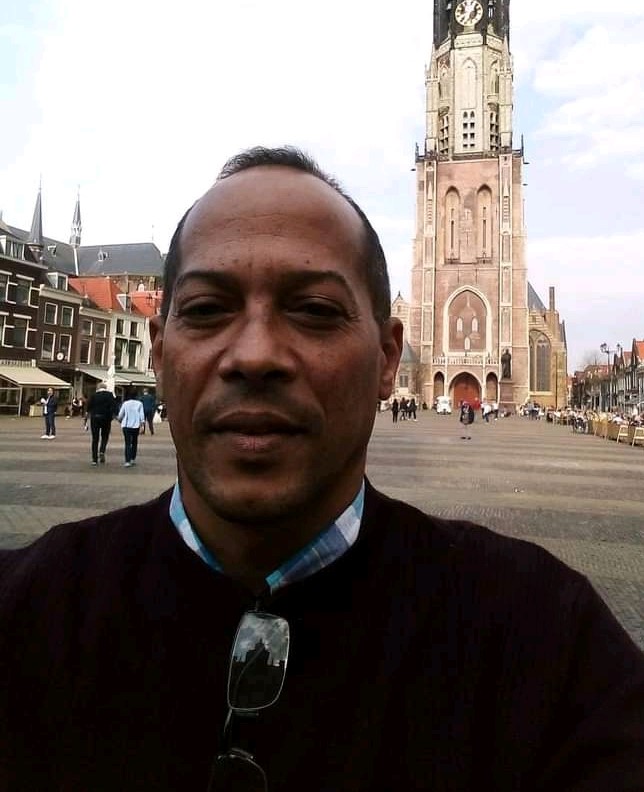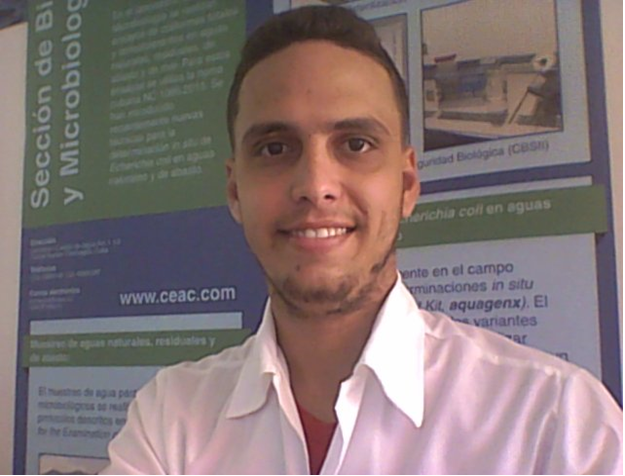Current Project: 2024 - 2027
RLA 7/028 – Strengthening Regional Capabilities on the Application of Nuclear and Isotopic Techniques to Increase Knowledge about Stressors that Affect Marine and Coastal Sustainable Management (ARCAL CLXXXIX)
Previous Projects:
RLA 7/025 – Strengthening Capacities in Marine and Coastal Environments Using Nuclear and Isotopic Techniques (2020-2023).
RLA 7/022 – Strengthening Regional Monitoring and Response for Sustainable Marine and Coastal Environments (ARCAL CXLV) (2018-2019).
RLA 7/020 - Establishing the Caribbean Observing Network for Ocean Acidification and its Impact on Harmful Algal Blooms, using Nuclear and Isotopic Techniques. (2014-2017)
RLA 7/014 – Designing and Implementing Systems for Early Warning and Evaluation of the Toxicity of Harmful Algal Blooms in the Caribbean Region, Applying Advanced Nuclear Techniques, Radioecotoxicological Evaluations and Bioassays (2009-2012).
RLA 7/012 – Use of Nuclear Techniques to Address the Management Problems of Coastal Zones in the Caribbean Region. (2007-2012)
Participating Institutions:
Centro de Estudios Ambientales de Cienfuegos-Cuba (CEAC)

Research Areas:
- Ocean Acidification.
- Chemical Contamination.
- Harmful Algal Blooms (HABs) and Marine Biotoxins.
- Microplastic contamination.
THE PROBLEM
Cuba's coastal zone, with a length of 5,746 km and an associated population of 1.4 million people, is currently facing the negative impacts of water and sediment pollution, ocean acidification, and Harmful Algal Blooms (HABs). These are phenomena derived largely from the action of man and directly affect the economy of coastal areas, the safety of fishing resources, public health, tourism and the services that marine ecosystems provide to society.
Fishing, being a country surrounded by the sea, is an important source of protein that contributes significantly to the food security of the population. However, in the last 30 years it has shown a decreasing trend. Even so, the fishing sector contributes 0.1% to GDP, marketing some 35,000 t in national and international markets, generating 71 million USD (2013) in exports of fishery products and 7,480 direct jobs (2013). The 245 coastal settlements, strictly fishing, depend on the sea and its resources as an important source of income.
Tourism, for its part, represents approximately 4.7% of GDP. This sector enjoys rapid growth with a strong impact on the national economy. In 2018, approximately 4.7 million visitors were received, representing an income of more than 3 billion USD.
INFORMATION FOR ACTION
Cuba is a member of the “Research Network of Marine-Coastal Stressors in Latin America and the Caribbean” (REMARCO). Its objective is that its results on pollution, ocean acidification and HABs constitute scientific support for environmental decision-making. Reliable scientific information is generated through the network to assess the impact of stressors, propose possible solutions and measure the effectiveness of management policies applied.
Country Members:
Alain Muñoz Caravaca. Nuclear Physical Engineer, MSc. Applied Mathematics, PhD. Technical Sciences.

Centro de Estudios Ambientales de Cienfuegos (CEAC), Cuba.
Role in the Project: DTM Proyect RLA 7/025.
Contact info: alainmunozcaravaca1970@gmail.com / alain@gestion.ceac.cu
He works as Deputy Director of Science at the Centro de Estudios Ambientales, is a Senior Researcher and directs the Geomatics and Hydrodynamic Modeling of basins and coastal areas research line. He is the director of several regional initiatives on integrated management of basins and coastal zones, with the application of different analytical techniques, physical-numerical models and remote sensing techniques.
Yoelvis Álvarez Bolaños. Chemical Engineer, MSc. Environmental Sanitation.

Centro de Estudios Ambientales de Cienfuegos (CEAC), Cuba.
Role in the Project: Chemical Pollution Component Researcher (Heavy Metals).
Contact info: yoelvis@ceac.cu / yoelvisely@gmail.com
Since 2004 and beginning as a scientific reserve, he has been working in the Environmental Testing Laboratory, specifically in the heavy metals analytical section. He is currently an Associate Researcher and his most experienced field of action is the analytical validation of methods for determining heavy metals and the evaluation of levels, transport and sources of these pollutants in the environment, mainly mercury. He participated in the international projects RLA7012, RLA7022. He is currently responsible for the national ISOVIDA project.
Luis Ángel Aragón. Bachelor of Biology.

Centro de Estudios Ambientales de Cienfuegos (CEAC), Cuba.
Role in the Project: Ocean Acidification Component Researcher.
Contact info: luisangel@ceac.cu
Since 2018, he has worked as a Scientific Reserve at the Centro de Estudios Ambientales de Cienfuegos (CEAC), specifically in the Marine Radioecology and Applied Oceanography Section. His work is based on investigating the impact of Ocean Acidification by measuring the variables that regulate the carbonate system. He has participated in the sampling and in the analysis of the variables in the laboratory. He is studying a master's degree in Integrated Management of Coastal Zones, with a thesis topic linked to his line of research. He is responsible for a technical scientific service, Camaroneras, where he analyzes the quality of water, sediment and biological material.
Héctor Alejandro Cartas Águila. Bachelor’s Degree in Nuclear Physics. MSc. Nuclear physics.

Centro de Estudios Ambientales de Cienfuegos (CEAC), Cuba.
Role in the Project: Ocean Acidification Component Researcher.
Contact info: hector@ceac.cu
Graduated in 1993. He has worked since September 1, 1993 at CEAC; He is currently the Head of the Radiometry Section of the Environmental Testing Laboratory. His specialty is measuring radiological variables that describe environmental radioactivity. He masters analytical techniques such as Gamma Spectrometry to determine radionuclides in environmental samples, the measurement of the environmental gamma equivalent dose rate with portable radiometers and the determination of Radon in water. He has advanced knowledge in Radiological Protection and is the Head of Radiological Protection at CEAC. He is responsible for the operation of the National Radiological Surveillance Network in the central region of Cuba. He participates in scientific projects where he applies natural radionuclides as radiotracers of environmental processes.
Lisbet Díaz Asencio. Bachelor of Biology, MSc. Integrated Management of Coastal Zones.

Centro de Estudios Ambientales de Cienfuegos (CEAC), Cuba.
Role in the Project: HABs Component Researcher.
Contact info: lisbet@ceac.cu
She works as a CEAC researcher and is Head of the Microbiology and Bioassays Section of the Environmental Assays Laboratory. Within the framework of IAEA projects, her group has worked on the implementation of protocols for the sampling and quantification of benthic microalgae, on the assembly and start-up of the laboratory for the cultivation of microalgae and on the development of the RBA bioassay for the detection and quantification of ciguatoxins. She has participated in international workshops and conferences and has published several articles related to the topic of HABs and ciguatera.
Arianna García Chamero. Bachelor of Biology, MSc. Integrated Management of Coastal Zones.

Centro de Estudios Ambientales de Cienfuegos (CEAC), Cuba.
Role in the Project: Microplastics Component Researcher.
Contact info: arianana@ceac.cu
She has been working as a researcher at the Centro de Estudios Ambientales de Cienfuegos (CEAC) since 2014. She is the coordinator of a national project for the development of analytical techniques for the evaluation and characterization of microplastics in environmental samples. She participated in the RLA 7022 international project. She actively participates as head of the research line for the study of microplastic contamination in environmental matrices.
Marco Antonio García Varens. Bachelor of Pharmaceutical Sciences.

Centro de Estudios Ambientales de Cienfuegos (CEAC), Cuba.
Role in the Project: Microplastics Component Researcher.
Contact info: mgvarens@ceac.cu
He has been working as a scientific reserve since January 2020 at the Centro de Estudios Ambientales de Cienfuegos (CEAC), specifically in the Organic Section. Its scope of action is the determination of microplastics in sand, surface water and water columns. As well as its capacity as a vector of persistent organic pollutants, such as PAHs, PCBs and organochlorine pesticides, it also works on the evaluation and comparison of the levels of polycyclic aromatic hydrocarbons in marine sediments in the Cienfuegos Bay.
Miguel Gómez Batista. Bachelor of Biology. MSc. Integrated Management of Coastal Zones.

Centro de Estudios Ambientales de Cienfuegos (CEAC), Cuba.
Role in the Project: Ocean Acidification Component Researcher.
Contact info: mgomezbatista@gmail.com / miguel@ceac.cu
He works as an Assistant Researcher of the CEAC, he is Head of the Radioecology and Applied Oceanography Section. Within the framework of IAEA projects, his group has worked on the implementation of protocols for the sampling and quantification of variables related to ocean acidification and its national report to SDG 14.3.1. He has participated in international workshops and conferences, has published articles related to the topic of acidification.
Yusmila Helguera Pedraza. Bachelor of Biology, MsC. Marine Biology and Aquaculture.

Centro de Estudios Ambientales de Cienfuegos (CEAC), Cuba.
Role in the Project: Microplastics Component Researcher.
Contact info: yusmilahelguera@ceac.cu / yusmilahelguera@gmail.com
She has been working since 2005 as a researcher at the Centro de Estudios Ambientales de Cienfuegos (CEAC), specifically in the Marine Radioecology and Applied Oceanography Section. Her scope of action and her greatest experience are framed in the benthos ecology of tropical coastal ecosystems and the use of environmental records for the historical reconstruction of environmental processes, with emphasis on those associated with climate change. She more recently has gained experience in monitoring sea acidification and its effects on marine ecosystems. Microplastic contamination has been another of the researcher's fields of action in recent years. As the second counterpart of RLA7025 in Cuba, it has management and/or participation tasks in all its components.
Maikel Hernández Núñez. Sociology graduate.

Centro de Estudios Ambientales de Cienfuegos (CEAC), Cuba.
Role in the Project: Communication Focal Point.
Contact info: maikel@ceac.cu / maikelhn2010@gmail.com
He has worked as an institutional communicator for the Centro de Estudios Ambientales de Cienfuegos (CEAC) since 2015. He is responsible for the communication outputs of all national and international research projects, as well as the scientific-technical services and state services through social networks, the institutional website, and the media. He coordinates with journalists from the national information system, managing to insert the CEAC with news of scientific impact in the written, radio, television and digital press. He actively participates in the Network of Nuclear Communicators of Cuba (RECNUC), since its foundation.
Elianet Pérez Pérez. Bachelor’s Degree in Chemistry.

Centro de Estudios Ambientales de Cienfuegos (CEAC), Cuba.
Role in the Project: Ocean Acidification Component Researcher.
Contact info: elianet@ceac.cu
She did coursework related to the verification of (pH/AT) in seawater using conventional methods and her diploma work related to the determination of carbon species in seawater using isotopic techniques.
Since 2019, she has worked at the CEAC, linked to the Physical-Chemical Water Testing Section, where she has been trained in this type of testing, and to the Marine Radioecology and Applied Oceanography Section, where she is part of the team in charge of sampling and analysis of seawater samples for ocean acidification (AO) studies. Her work is based on investigating the chemistry of carbonates in seawater and the treatment of residual HGCl2, the result of carrying out these tests. She is currently part of REAMARCO, in the execution of a manual for the sampling, analysis and determination of uncertainty of the AO indicators.
Dariadelys Reyes Noa. Licenciada en Biologist.

Centro de Estudios Ambientales de Cienfuegos (CEAC), Cuba.
Role in the Project: Ocean Acidification Component Researcher.
Contact info: dariadelys@ceac.cu
Since 2019, she has worked as a Scientific Reserve at the Centro de Estudios Ambientales de Cienfuegos (CEAC), specifically linked to the Marine Radioecology and Applied Oceanography Section. Her work is based on researching the impact of Ocean Acidification on coastal marine ecosystems. She participates in the monitoring of the variables that regulate the carbonate system and in the measurement of said variables in the laboratory. She has also gained experience in the isolation and characterization of microplastics present in fish stomachs.
Gabriel Rojas Abrahantes. Bachelor of Biology.

Centro de Estudios Ambientales de Cienfuegos (CEAC), Cuba.
Role in the Project: HABs Component Researcher.
Contact info: gabriel@ceac.cu
He works as a CEAC researcher, is part of the microbiology and bioassays section of the Environmental Testing Laboratory. His experience lies in the study of harmful algal blooms, implementation of protocols for sampling and quantification of benthic microalgae, isolation, establishment and maintenance of cultures under laboratory conditions, and quantification of ciguatoxins using the RBA assay. He has participated in international workshops and conferences and has published articles related to the topic of HABs and ciguatera.
Yanadin L. Vera. Technician M. Higher Industrial Chemistry.

Centro de Estudios Ambientales de Cienfuegos (CEAC), Cuba.
Role in the Project: Ocean Acidification Component Researcher.
Contact info: yanadin@ceac.cu
2013 as a technician at the Centro de Estudios Ambientales de Cienfuegos (CEAC), specifically in the Physical Chemical Testing Section of Waters. His scope of action and greater experience are framed in analytical determinations such as dissolved oxygen, alkalinity determination, pH, nutrient determinations (N-NO2, N-NO3, N-NH4, P-PO4, PT, SiO2) and macro nutrients (calcium, magnesium, chloride and hardness) using different techniques and methods established in the procedures of the center. He has participated as a technician in the assembly of methods and their validation, as well as in different scientific research projects for the IAEA.
Progress and Challenges
The application of nuclear techniques has made it possible to characterize marine pollution caused by heavy metals and organic pollutants and its historical reconstruction in various ecosystems in the country.
Regarding the case of contamination by microplastics, the activities to date have been aimed at quantifying their levels in water, sediments, sand and marine organisms at a local scale. It is still necessary to establish monitoring programs for beaches and fishery resources with a national scope, with the aim of gathering as much basic information as possible.
As a result of the accelerated dissolution of carbon dioxide (CO2) in the sea, it becomes more acidic. In Cuba there is little information on this phenomenon and its impacts on ecosystems. The capabilities developed by the network make it possible to quantify the current levels of sea acidity, as well as to reconstruct its historical levels using corals and stable isotopes. The country, with the support of the IAEA, has created a national observatory for this purpose. However, it is necessary to quantify the magnitude of the phenomenon in various areas of the island platform. On the other hand, the strengthening of national and international collaboration is essential for the creation of new capacities, the transfer and maintenance of technologies.
In Cuba, ciguatera constitutes the main manifestation of harmful algal blooms, even when the government applies regulations such as the prohibition of the commercialization of certain potentially toxic fish species. Cuban scientists are working on the establishment of monitoring programs for toxic microalgae to detect their presence and abundance early, and on the implementation of a nuclear technique (Receptor Binding Assay, RBA) to quantify the toxins present in the fish products. The implementation of this technique and its sustainability, as a service at the country level, requires effective integration with the fishing sector, which provides samples collected in areas of interest.
